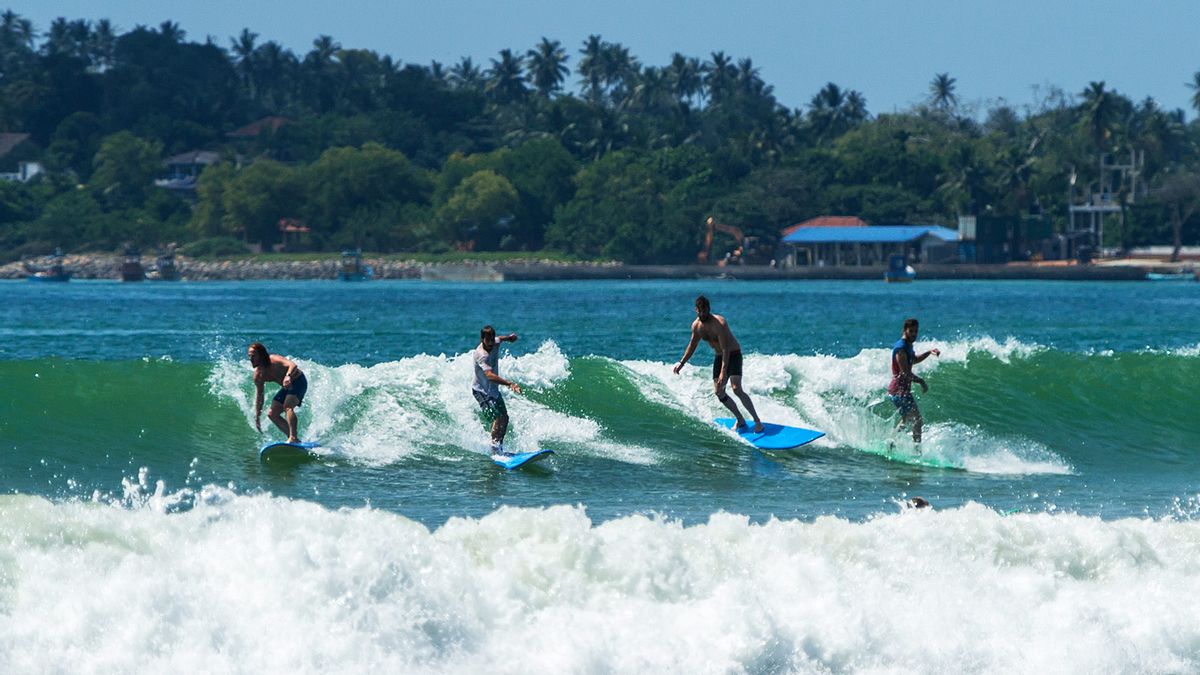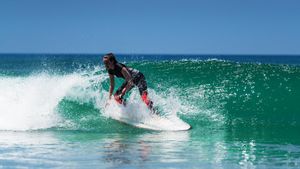I’ve always been the proverbial late bloomer. Preferring to defer a lot of life skills—be it learning to swim or drive a car for that matter—way past the usual age most people cut their teeth in them. And so, hitting the surfboard for the very first time in my 30s was no different.
Surf’s up!
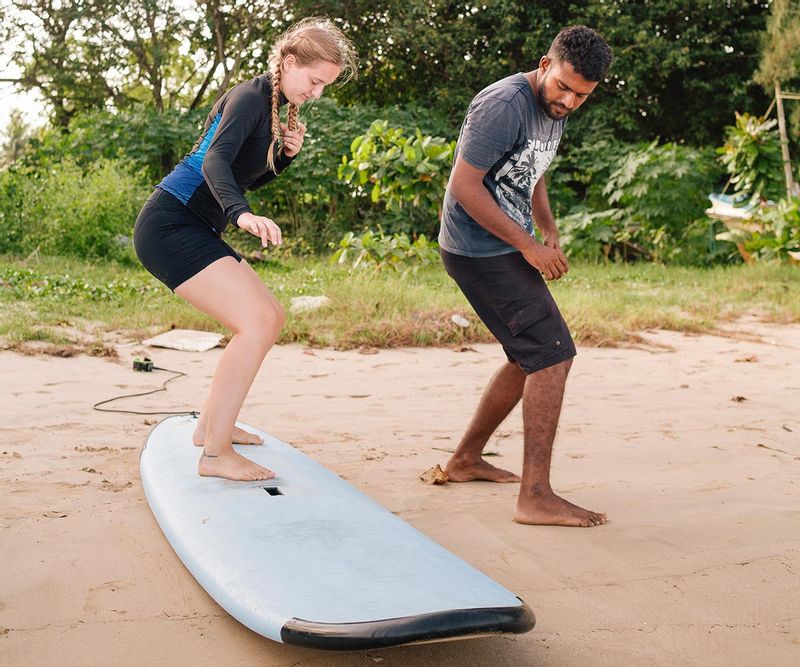
Inspired by truly binge-worthy adventure sports reality TV shows like Bondi Rescue and The Ultimate Surfer, I decided to throw caution to the wind (quite literally) and put feet to board and board to surf. The destination of my choice for this aquatic initiation? Sri Lanka; the teardrop-shaped island dangling like an emerald jewel in the Indian Ocean.
India has its fair share of surfing hot spots like Kodi Bengre in Karnataka and Kovalam in Kerala, but wanting to go out of my comfort zone, I headed out on a three-week trip to Sri Lanka. A learning vacation where the agenda was clear: learn some basic-level surfing for two weeks at two different surf schools and then spend the last week gorging myself silly on the wonderful coconut-enhanced, spicy cuisine of our southern neighbour.
One of the greatest advantages Sri Lanka has over other surfing destinations in Asia, like Bali for instance, is that it is an all-year-round surfer’s paradise. The island has two main surf hubs. On the South West coast with beaches like Ahangama, Weligama and Mirissa and in the Eastern Province around Arugam Bay. Interestingly, the same Southwest swells that hit Bali soon make their way to Sri Lanka. Here one can find an equal balance of both beach and reef waves that are perfect for all level of surfers from beginners to pros. The relatively calm waters here too are an added bonus to the reluctant novice. The months from November to April are considered to be the best times of the year to crash the waves on Sri Lanka's South West coast.
Recognised by the international surfing community as one of the higher-latitude surf zones in the Indian Ocean, the waves here tend to be consistent, rarely flat and a little smaller than elsewhere in South East Asia. We’re talking about offshore waves that are around 2-8 foot in the main, dry season from November to April, thus making this the best time of the year to crash the waves on Sri Lanka's South West coast. A great place to learn how to surf—I was advised by a pro surfer dude I had met years ago in Bali—and then advance into some more challenging waves. And so I did just that...
Beginner’s luck at Mirissa
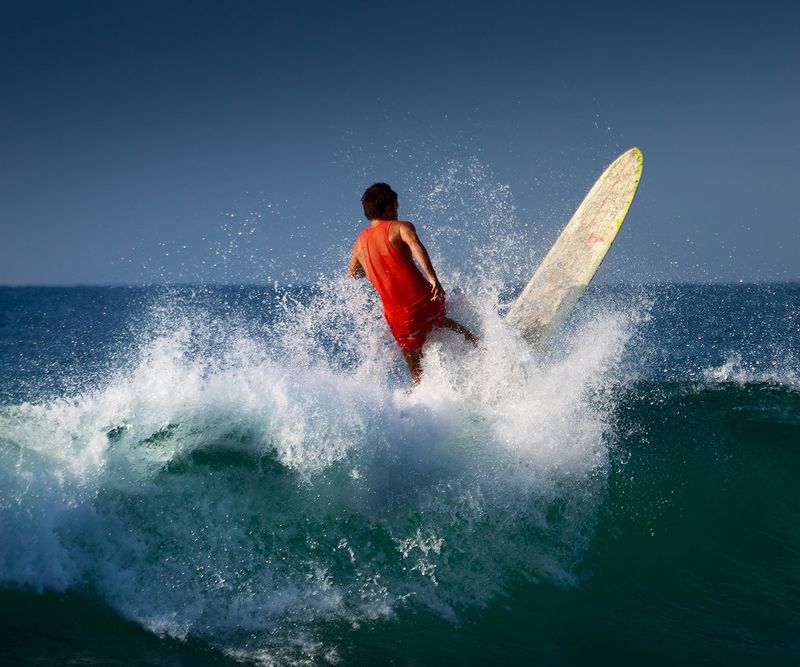
Legendary for its world-class surfing scene, Mirissa at the very southern tip of Sri Lanka is where I had decided to head for an introductory week-long surfing course at Surf and Yoga Mirissa. Conducted by Priyal Kiramage who has been an ISA (International Surfing Association) Level 1 certified surf coach for over a decade, this daily, two-hour lesson starts with a meet up at Priyal’s surf camp where you are taken through the basics of surfing—right from choosing the right board to the right beach. Here, combining surfing and yoga is the main ideology, whereby both upper-body and lower-body exercises—both crucial to proper surfing posture—are first taught before advancing on to the waves.
What makes Mirissa a great place to get started is that it is a relatively quieter and less crowded surf spot in the South-West region of Sri Lanka. Blessed with an ideal location point in between rocks and a hill, the waves here are not affected by onshore wind. Thus, making Mirissa a point reef break which is ideal for beginner to intermediate levels of surfing.
The school’s specially designed, colourful tuk tuk then takes you to the surfing beach where the practical lessons take place. For my first time, it was the Weligama Beach break that’s said to be great for beginners. Over the next few days, we proceeded to the beach at Madiha that’s best for intermediate surfers. At the beach is where I learnt how to find the right balance and maintain my posture on the board. Priyal also makes sure to spend some time talking about safety rules and surfers’ etiquette. Afterwards, you get to hit the water to put all you have learnt into practice. With a dash of embarrassment in the form of a few ‘slam dunks' into the ocean thrown in for good measure.
Testing waters in Ahangama surf camp
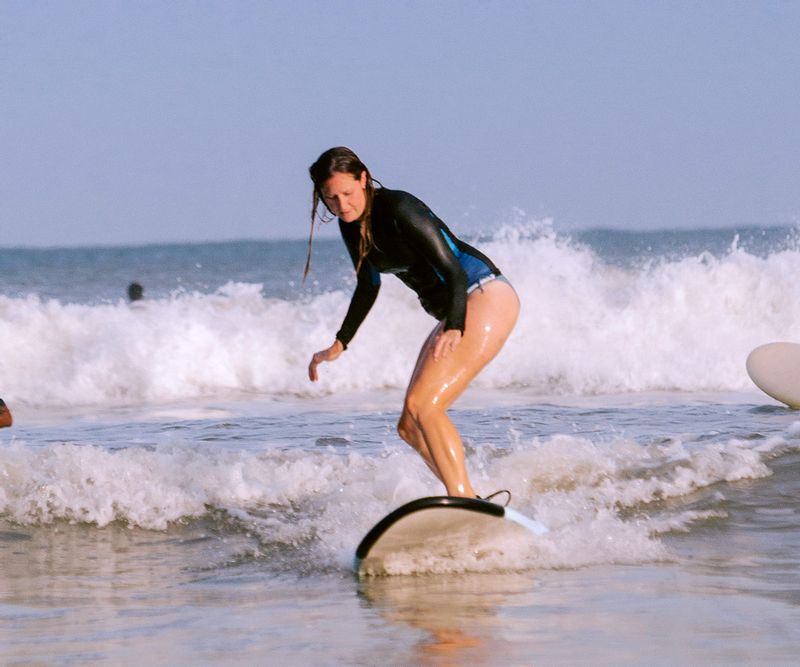
Feeling a tad confident, I went on to take a five-day course at another surf camp in nearby Ahangama—a place that’s challenging to say the very least, thanks to its magnificent rips and hollow barrels to ride. Waves here are best at 3-4 foot, but can also be surfed up to 6-8 foot if conditions are right. Famous for having some sort of reliable wave on most days in the season, it can get a tad busy and challenging here with other surfers vying for that same, prized section of wave. But my personal challenge came in the form of the formidable Tim Jones. As the coaching director of the Surf School Sri Lanka, Tim is a taskmaster like no other.
Akin to a boot camp, the surfing course at the school begins at a discombobulating 6 am. Every wannabe surfer starts with the 2.5 hour ‘in water' coaching session that includes warm up exercises, basic board manoeuvring and balance exercises. Top off the list is stuff like spending at least half an hour observing and studying the surf. We were told to watch where other surfers paddle out, where the waves are breaking, and to respect the right way of those who were there on the waves before us. Also, as beginners, it is vital to find someplace that’s not too crowded, where one can catch lots of waves and master the art of paddling into them and popping up, while maintaining balance in the board. This is followed by video classes that show you the techniques employed by pro surfers to tackle the waves along with a few surfing basics and etiquette (see box). These classes also offer plenty of tips and tricks that will help you sink (pun unintended!) your teeth into the nuances of riding those spellbinding crests and barrelling through the hollows with your foam board like a pro.
Surfing basics
- Always learn to surf on a beach known for good, steady waves. Save the more challenging waves for when you’re more confident.
- Buddy up: beginners should never hit the waves solo. Always have a friend (preferably someone who can swim) along, in case of emergencies.
- Use a large, liberally waxed-up, soft-topped board (as opposed to the more professional fibreglass or epoxy ones) with an attached foot leash. While the former offers you a bigger, smoother surface to learn on—as well as being a good floatation device—a leash can offer you the comfort of always being tethered to your board in case of an emergency.
- As a beginner surfer who’s yet to get their equilibrium, you are almost always guaranteed to drift as per the current. So, pick a landmark on the beach to help you stay even with where you want to be.
- Stay in your own lane! As a beginner on your way to an intermediate level you may be tempted to ride with the ‘big boys’ or pro surfers. Don’t. Not only are they more experienced, but the waves that they choose are nowhere close to the ones you should be riding as a beginner.
COVID-19 rules for travellers in Sri Lanka
|


